If there’s anything that this work-from-home new normal has proven, it’s that many office tasks can actually be accomplished from anywhere. While some companies have already been doing a remote work setup even before the pandemic, others have considered shifting to this in the long term. Now more than ever, living as a digital nomad — whether through remote or freelance work — has become quite an alluring idea. After all, wouldn’t it be great to travel at your own pace while earning moolah? (In other words: limited vacation leaves, who?)

Image credit: oscar gutierrez via CanvaPro
At the same time, many countries are reviving their tourism industries by offering long-term-stay visas to attract remote workers from all around the globe. Some of these cater to digital nomads of all types, whereas others have more specific classifications. Some come at a heftier price, while others are relatively more affordable.
Below is a guide to the best countries for digital nomads (especially those from Southeast Asia!) that you might want to consider temporarily moving to. We know that deciding the best option can be tricky, so we’ve included some of the key factors that you need to know before applying and booking a one-way ticket.
Also read: 18 Career Paths That Will Open You Up to Travel Opportunities
Asia
1. Dubai – United Arab Emirates
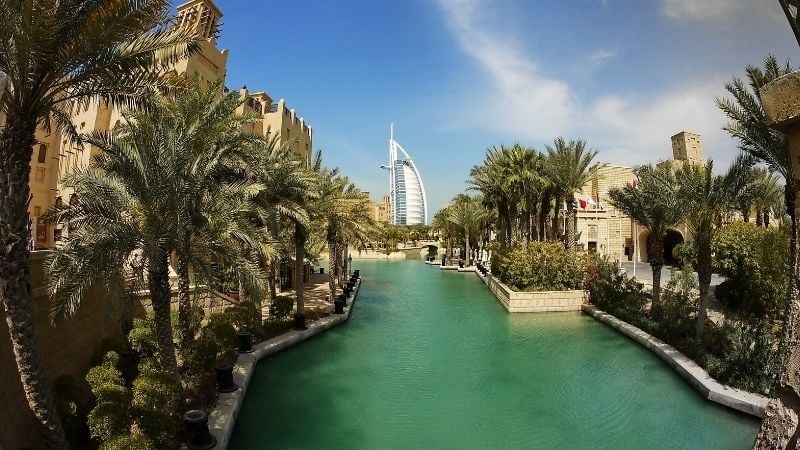
Image credit: Gim42 via Canva Pro
Yes, we know we said “countries for digital nomads” instead of just cities, but this one’s a special case. You can now enjoy a long-term workcation in Dubai with its Work remotely from Dubai programme. This one-year virtual working program permits remote workers to stay in this glamorous oasis-slash-megalopolis. But that’s not all, aspiring digital nomads will get access to telecoms, utilities, and schooling options.
Income to prove: US$3,500 (~S$4,763) monthly
Visa application cost: US$611 (~S$831) per person
Average monthly cost of living: د.إ4,000 (~S$1,482) per person, rent not included
Average broadband internet speed: 186.76Mbps
Climate: Subtropical desert, with mild winters and hot, humid summers
For the complete requirements and process, click here.
2. Georgia
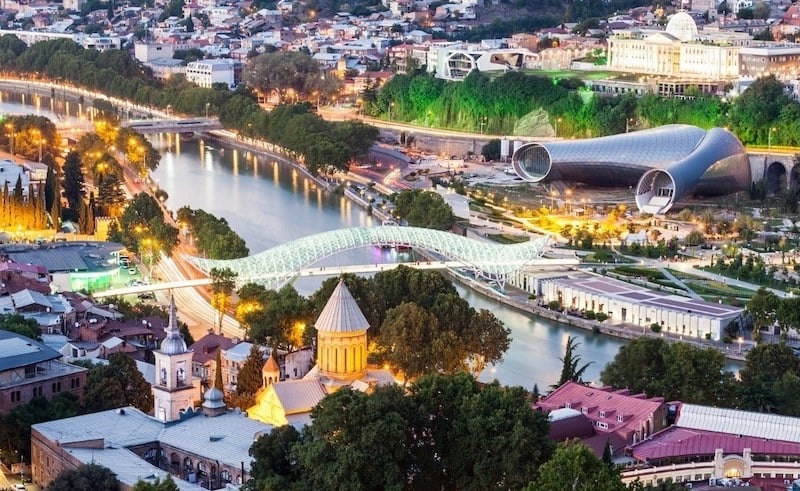
Image credit: Andrey Khrobostov via Canva Pro
Got Georgia (as in the country, not the American state) on your mind? Granted, it’s one of the more underrated countries for digital nomads, Those who have been there would rave about the fascinating mix of mediaeval and futuristic attractions! Previously, the nation introduced a Remotely from Georgia program, which originally allowed remote workers from 95 countries to live in and work there for at least a year — without even applying for a visa.
Now, the Georgian government has updated its visa policies, making it easier than ever to experience this beautiful country. Citizens from 98 countries, including Southeast Asian countries like Brunei, Malaysia, Singapore, and Thailand, can now enter, live, work, and study without needing a visa or residence permit.
Income to prove: US$2,000 (~S$2,700) monthly
Program application cost: Free
Average monthly cost of living: ₾1,646 (~S$838) per person, rent not included
Average broadband internet speed: 32.24Mbps
Climate: Subtropical on the coast and in the western plains; continental or temperate in the central and eastern inland areas; year-round winter in alpine regions
For the complete requirements and process, click here.
3. Malaysia
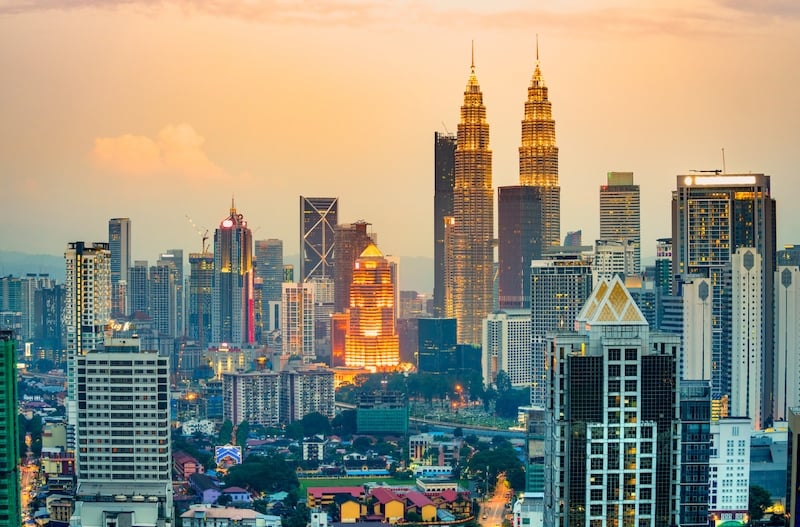
Image credit: MasterLu via Canva Pro
Malaysia‘s vibrant landscapes and fascinating culture, coupled with its low cost of living and excellent internet connectivity, make it one of the best countries for digital nomads. The country launched its digital nomad visa under the De Rentau program — making it the first Southeast Asian country to offer such a visa!
Foreigners will receive a Professional Visit Pass that will allow them to stay for between three and 12 months. After which, this can be renewed for an additional 12 months. Digital freelancers, independent contractors, and remote workers (whether full- or part-time) are welcome to apply.
Income to prove: US$24,000 (~S$32,590) annually
Program application cost: RM1,000 (~S$307) for the main applicant; RM500 (~S$154) for additional dependents
Average monthly cost of living: RM4,505 (~S$1,383.64) per person, rent included
Average broadband internet speed: 91.5Mbps
Climate: Tropical climate with a rainy and dry season, as well as two monsoon seasons
For the complete requirements and process, click here.
Also read: 7 Affordable Airbnbs & Vacation Rentals in Kuala Lumpur
4. Thailand

Image credit: boggy22 via Canva Pro
While not exclusively for digital nomads, Thailand offers a Long-Term Resident Visa, an attractive option for remote workers and freelancers. However, they must be employed under well-established companies that are based outside Thailand. This visa is valid for up to 10 years and allows for the possibility to obtain a work permit later on — hence the pricey income requirements and application fee. But given the significantly cheaper cost of living in Thailand, it might just be worth the investment.
Income to prove:
- US$80,000 (~S$108,660) annually in the past two years; or
- US$40,000 (~S$54,330) annually in the past two years, if the applicant has at least a master’s degree or owns intellectual property
Program application cost: ฿50,000 (~S$1,942)
Average monthly cost of living: ฿25,000 (~S$970.70) per person, rent included
Average broadband internet speed: 205.63Mbps
Climate: Tropical climate with a rainy and dry season, as well as two monsoon seasons
For the complete requirements and process, click here.
5. Bali – Indonesia

Image credit: platongkoh via Canva Pro
While not applicable nationwide, Bali, Indonesia has introduced visa options to accommodate remote workers, freelancers, and digital nomads. One option is the Visa for Digital Nomads and Remote Workers, which allows stays from two to six months (also known as the 211A Tourism Visa). The other option is the Special Remote Worker (E33G) Visa, specifically for remote workers employed by companies outside of Indonesia. For the latter, the details are as follows:
Income to prove: US$60,000 (~S$81,566) annually
Program application cost: IDR 12,400,000 (~S$1,043) for the standard application; IDR 14,400,000 (~S$1,211) for express application
Average monthly cost of living: IDR 17,200,000 (~S$1,447) per person, rent included
Average broadband internet speed: 46.23Mbps
Climate: Tropical climate with two distinct seasons, wet (monsoon) season and dry season
For the complete requirements and process, click here.
6. Taiwan
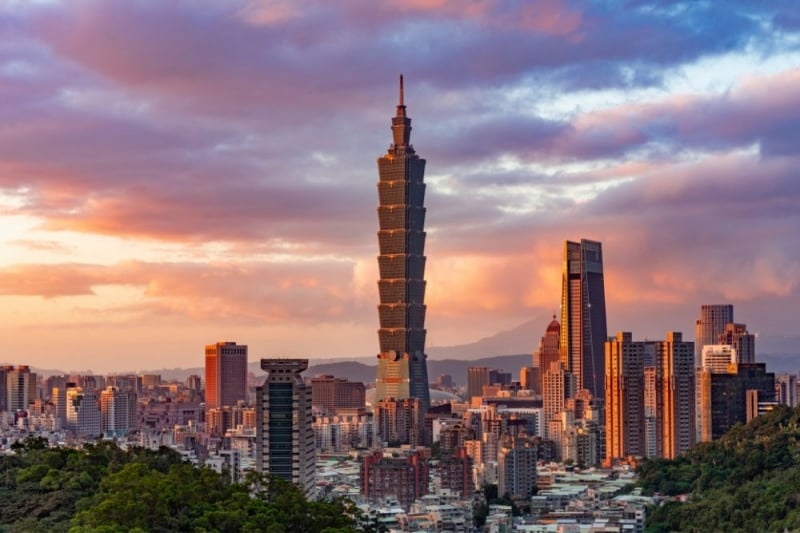
Image credit: Timo Volz via Canva Pro
Taiwan does not have a visa designed specifically for digital nomads. Nevertheless, it offers a Gold Card digital nomad visa, catering to individuals with high-skilled professions in one of the following industries:
- Science & Technology (National Science and Technology Council)
- Economy (Ministry of Economic Affairs)
- Education (Ministry of Education)
- Culture & Arts (Ministry of Culture)
- Sport (Ministry of Education)
- Finance (Financial Supervisory Commission)
- Law (Ministry of Justice)
- Architecture (The Construction and Planning Agency, Ministry of the Interior)
- National Defense (Ministry of National Defense)
- Digital (Ministry of Digital Affairs)
- Special cases that, with consultation, are recognized by the NDC
Income to prove: monthly income of US$5,700 (~S$7,748), if you’re not part of the industries listed above
Program application cost:
U.S. Passport Holders (Applying Abroad):
- NT$6,300 (~S$263) for a one-year visa
- NT$7,300 (~S$304 for a two-year visa
- NT$8,300 (~S$346) for a three-year visa
Other Foreign Passport Holders (Applying Abroad), or Domestic Applications (Foreign visitors with Visa Exemption/Visitor Visa)
- NT$3,700 (~S$154) for a one-year visa
- NT$4,700 (~S$196) for a two-year visa
- NT$5,700 (~S$238) for a three-year visa
Holders of Valid Alien Resident Certificates or similar:
- NT$1,500 (~S$62) for a one-year visa
- NT$2,500 (~S$104) for a two-year visa
- NT$3,500 (~S$146) for a three-year visa
Residents of Hong Kong or Macau:
- NT$3,100 (~S$129) for a one-year to three-year visa.
Average monthly cost of living: NT$24,542.20 (~S$1,025) per person, rent excluded
Average broadband internet speed: 153.51Mbps
Climate: Subtropical climate with long summers (May to September), winters (November to March), as well as spring and autumn (April and October respectively)
For the complete requirements and process, click here.
Europe
7. Estonia
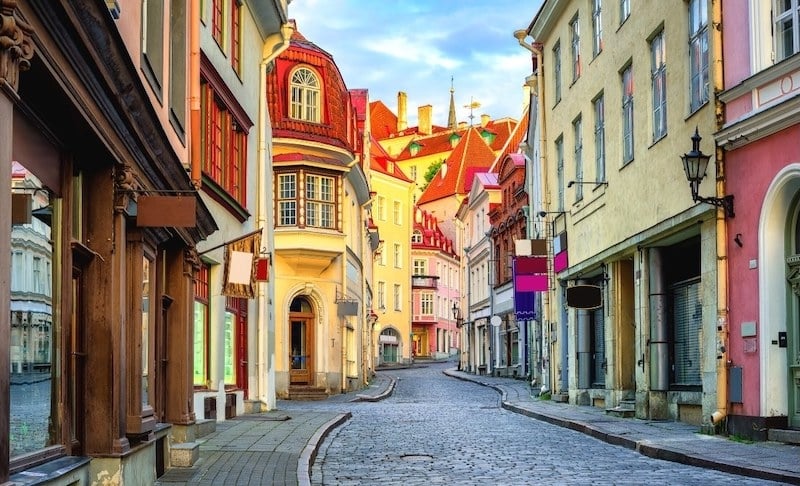
Image credit: Xantana via Canva Pro
Did you know that Estonia is actually the first country to cater to remote workers? Back in 2014, they created an e-residency program that lets foreign entrepreneurs licence an EU-based online business. And now, the country launched its official Digital Nomad Visa for foreigners who own a location-independent business and/or work remotely for a company based outside of Estonia. You can apply for either Type C (up to 90 days) or Type D (longer than 90 days).
Income to prove: €4,500 (~S$6,543) of monthly gross income
Visa application cost: €80 (~S$ 127.46) for Type C; €100 (~S$159.33) for Type D
Average monthly cost of living: €1,430 (~S$2,080) per person, rent not included
Average broadband internet speed: 103.48Mbps
Climate: European continental, with warm and dry summers and fairly severe winters
For the complete requirements and process, click here.
8. Spain
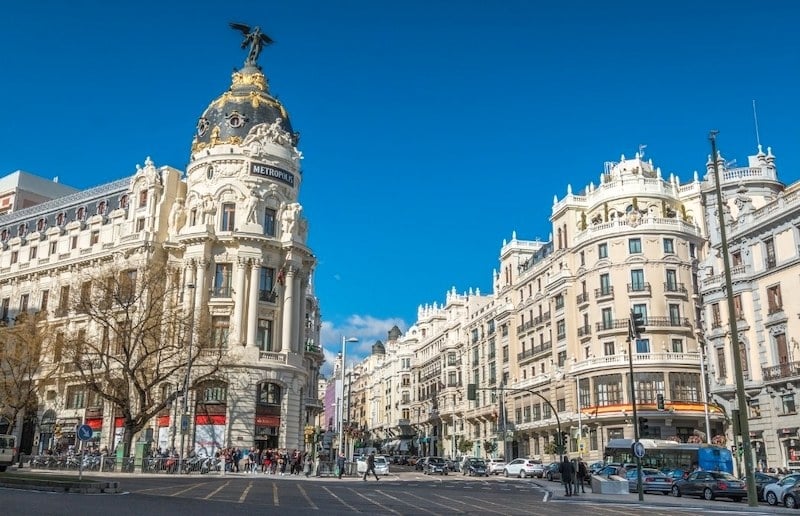
Image credit: PocholoCalapre via Canva Pro
You’ve probably already heard that Spain is one of the easiest countries to migrate to. But other than that, it’s also one of the best countries for digital nomads looking to work in the Europe! Spain introduced the Digital Nomad Visa for any foreigner planning to live in Spain as a resident, working remotely for a company or an employer (or self-employed) located outside of the Spanish national territory.
Just like most countries with digital nomad visas, this one is valid for one year but can be renewed if all the conditions are still met. Though, do note that it’s only for those working remotely using computer and telecommunication systems.
Income to prove: at least 200% of the monthly Spanish national minimum wage (approximately £2,140 (~S$3,111) per month or £25,700 (~S$37,371) per year)
Visa application cost: Starts at €205 (~S$326.71) depending on your citizenship
Average monthly cost of living: €1,000 (~S$1,454) per person, rent included
Average broadband internet speed: 137.21Mbps
Climate: Mediterranean climate, with hot, dry summers and mild yet rainy winters
For the complete requirements and process, click here.
Also read: 8D7N Itinerary Around Spain: Barcelona, Valencia and Madrid
9. Portugal
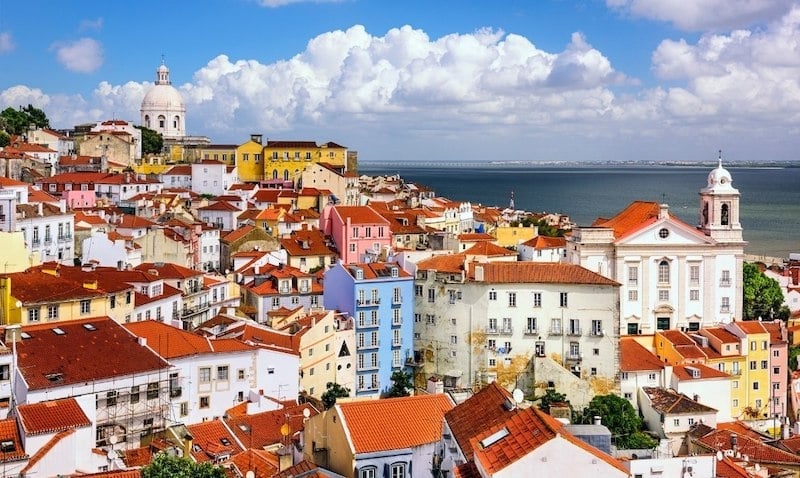
Image credit: SeanPavonePhoto via Canva Pro
Another one of the easiest countries to migrate to that also offers digital nomad visas is Portugal. Here, you have several options. The first is the Temporary Stay Visa for Remote Workers that’s valid for less than a year with multiple entries. There’s also the Residency Visa that allows you to stay for two years and also serves as a pathway to permanent residency. Both visas are valid for those self-employed individuals, freelancers, and even those living on passive income.
The country also has a D7 Visa, which is valid for a year and allows for the possibility of permanent residency. However, this one is geared towards retirees and those who earn from “passive” income streams, such as rent or investments.
P.S. — On the island of Madeira, there’s even a Digital Nomads Village! How cool is that?
Income to prove: €3,280 (~S$4,769) monthly
Visa application cost: €90 (~S$130.87)
Average monthly cost of living: €1,408 (~S$2,253.69) per person, rent included
Average broadband internet speed: 119.06Mbps
Climate: Mediterranean climate, with hot, dry summers and mild yet rainy winters
For the complete requirements and process, click here.
Also read: 10 Airbnbs Homes & Vacation Rentals in Lisbon Close to the Capital’s Sights
10. Germany
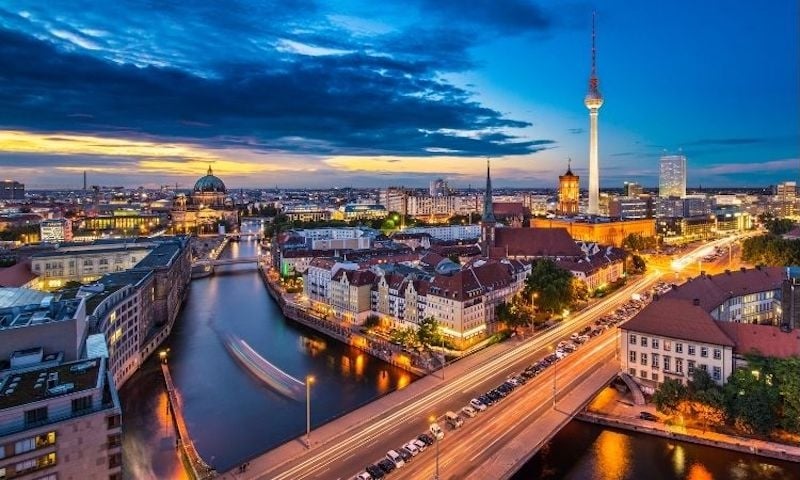
Image credit: SeanPavonePhoto via Canva Pro
Although Germany doesn’t offer a dedicated digital nomad visa, there are two suitable alternatives for remote workers: the Freelance Visa (Freiberufler) for professionals engaged in freelance work, such as artists, writers, and consultants; and the Self-Employment Visa (Selbständiger), intended for those who want to start or manage a business in Germany. Any citizens outside of the EU/EEA can apply for both these visas, as long as they can prove they meet the requirements.
Bank account balance to prove: ~€11,208 (~S$16,300)
Visa application cost: €80 (~S$116)
Average monthly cost of living: €1,700 (~S$2,472) per person, rent included
Average broadband internet speed: 85.73Mbps
Climate: Typical European continental, with warm, dry summers and cold, cloudy, and snowy winters
For the complete requirements and process, click here.
11. Czechia (Czech Republic)
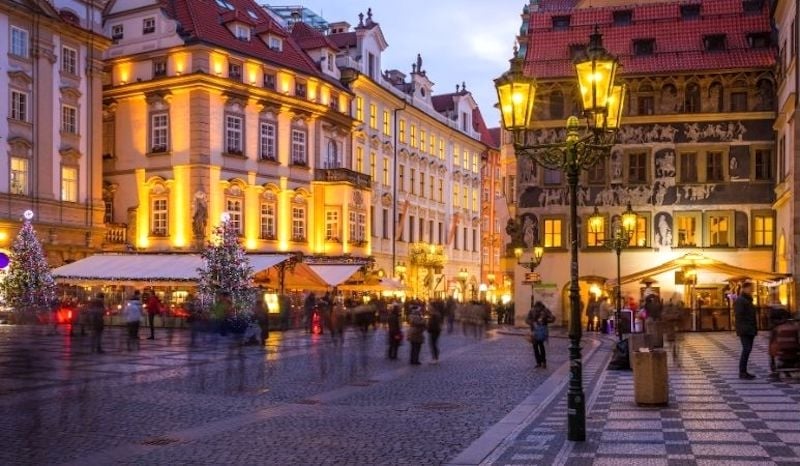
The Czech Republic has a long-term visa that’s commonly referred to as the Zivno Visa. Essentially, it’s an abbreviation for ‘Zivnostenske opravneni,’ which means a visa based on your Zivnostenské opravneni: the Czech word for a trade, freelancing, or business licence. Just like the digital nomad visa equivalent in Germany, this is also for those who wish to move to the country as either a freelancer or business owner. It’s valid for one year, but as part of the application requirements, you’ll have to prove a set accommodation in order to qualify.
Bank account balance to prove: 124,500Kč (~S$7,501.17)
Visa application cost: 2,500Kč (~S$150.63)
Average monthly cost of living: 18,935Kč (~S$1,091) per person, rent excluded
Average broadband internet speed: 52.78Mbps
Climate: Typical European continental, with warm, dry summers and cold, cloudy, and snowy winters
For the complete requirements and process, click here.
Also read: 10 Youngest Countries in the World Every History Buff Should See!
12. Croatia
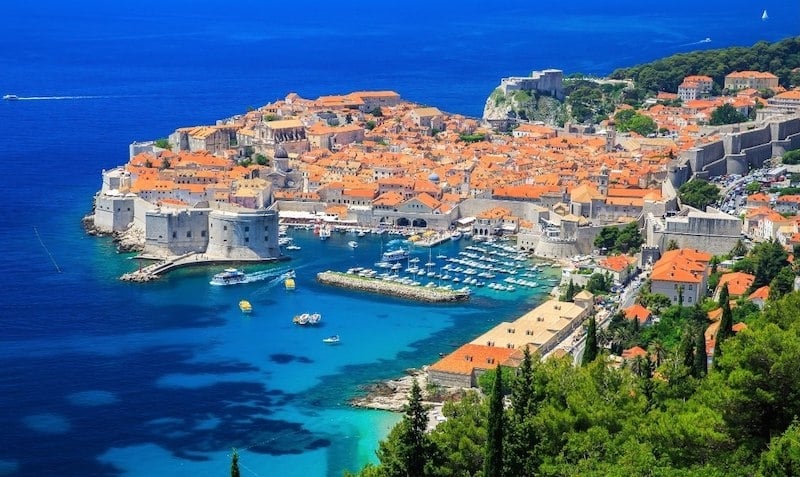
Image credit: sorincolac via Canva Pro
Croatia has joined the growing list of countries welcoming remote workers with a brand new Digital Nomad Visa. Although, do take note that the country’s legislation has a specific definition for “digital nomads,” which are those living outside of the EU and working through communication technology for a company (whether their own or not) that is not registered in Croatia.
Anyway, this digital nomad visa is available for different lengths of time, with a maximum of 12 months, and it cannot be extended. To renew, you’ll need to wait six months after the expiry of the previous visa.
Income to prove: €2,870 (~S$4,173) monthly
Visa application cost: €55.74 (~S$81.05) for the temporary stay permit, and €93 (~S$135.24) for the long-term visa (visa D), if submitted to a Croatian embassy or consulate
Average monthly cost of living: €1,500 (~S$2,182) per person, rent included
Average broadband internet speed: 65.8Mbps
Climate: Mediterranean climate in coastal areas; European continental climate in inland areas
For the complete requirements and process, click here.
Also read: 15 Airbnb Homes & Vacation Rentals in Croatia for a Relaxing Mediterranean Holiday
13. Iceland

Image credit: basiczto via Canva Pro
Ever dreamt of staying for months in Iceland to catch the Northern Lights… while also not having to leave work? Yup, it’s now possible with their Work in Iceland program, which gives long-term visas to remote workers that’s valid for up to six months. Recipients may also bring along their spouse, children under the age of 18, and/or cohabiting partner. The only catch is that you’ll need to have a passport that doesn’t require a tourist visa for Iceland.
Income to prove: 1,000,000Íkr (~S$10,581.44) monthly if solo; 1,300,000Íkr (~S$13,0151.73) monthly with companion/s
Visa application cost: 12,200Íkr (~S$118)
Average monthly cost of living: 415,271Íkr (~S$4,401.71) per person, rent included
Average broadband internet speed: 216.5Mbps
Climate: Cold and windy maritime climate, with short summers and long winters
For the complete requirements and process, click here.
Also read: 13 Important Things to Know Before Visiting Iceland
14. Norway
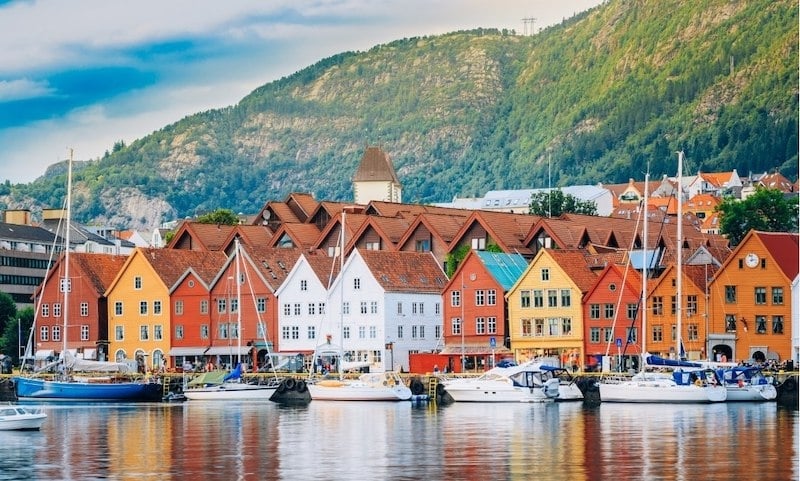
Image credit: bruev via Canva Pro
Another Nordic country that’s ideal for living as a digital nomad? Norway, which also happens to be among the happiest countries in the world! Foreign remote workers and freelancers can stay there for up to two years through the Independent Contractor Visa. However, there’s a caveat: You have to be self-employed with a contract to work on a project with a Norway-based client.
Income to prove: €35,719 (~S$57,084.86) annually
Visa application cost: €600 (~S$958.90)
Average monthly cost of living: 12,817.90kr (~S$1,590.66) per person, rent not included
Average broadband internet speed: 118.20Mbps
Climate: Marine climate in western areas with comparatively cool summers and mild winters; continental climate in eastern areas with warm summers and cold winters
For the complete requirements and process, click here.
Also read: My Journey on Norway’s Incredible Flåm Railway
15. Malta
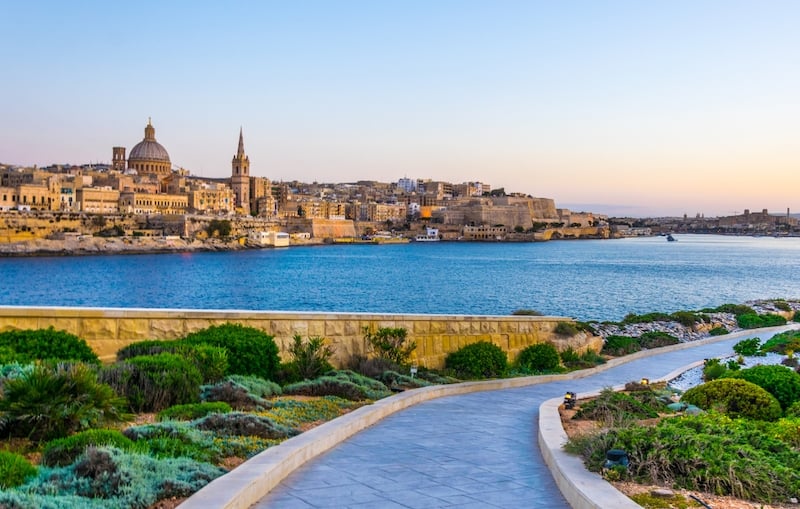
Image credit: trabantos via Canva Pro
This underrated archipelago might be one of the lesser-known European countries for digital nomads, but it has a lot to offer like its more popular neighbours. Think ancient temples and ruins, mediaeval towns, and pristine beaches where you can bask in the Mediterranean sun. Remote workers from non-EU countries can stay in Malta for at least a year (with a chance for renewal) through the Nomad Residence Permit.
Income to prove: €42,000 (~S$61,078) of annual gross income
Visa application cost: €300 (~S$425.70)
Average monthly cost of living: €785.80 (~S$1,143.34) per person, rent not included
Average broadband internet speed: 89.35Mbps
Climate: Mediterranean climate, with hot, dry summers and mild yet rainy winters
For the complete requirements and process, click here.
16. Greece

Image credit: KavalenkavaVolha via Canva Pro
From the mythic sights in Athens to the coastal wonders of Santorini and Mykonos, it’s no surprise Greece remains a crowd favourite that needs no introduction. It’s also one of the European countries welcoming digital nomads. With its Greek Digital Nomad Visa, non-EU citizens get to live and work in the country for a year, with the option to extend for another year. To be eligible, one must be working for a company/client based outside Greece, or own a business registered overseas.
Income to prove: €3,500 (~S$4,962.63) monthly
Visa application cost: €225 (~S$319.03)
Average monthly cost of living: €807 (~S$1174) per person, rent not included
Average broadband internet speed: 42.79Mbps
Climate: Mediterranean climate, with hot, dry summers and mild yet rainy winters in the lowland and island regions
For the complete requirements and process, click here.
Also read: Top 20 Airbnb and Vrbo Vacation Homes in Greece for Your Dream Getaway
17. Hungary
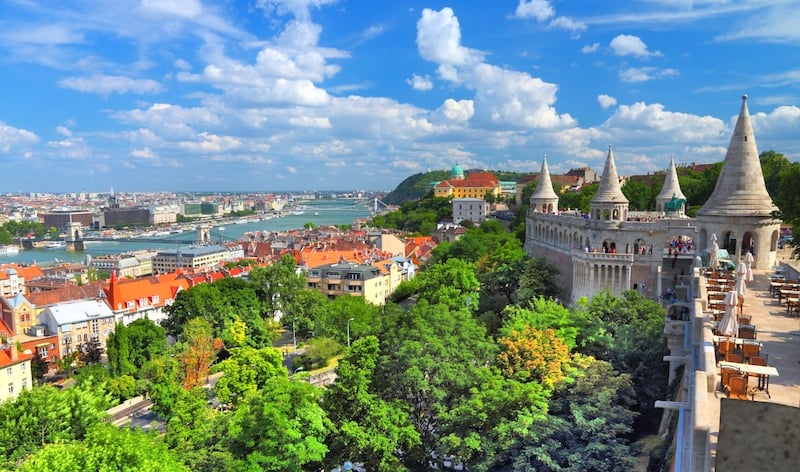
Image credit: tupungato via Canva Pro
Hungary offers the White Card, a visa designed for foreign nationals who wish to live and work remotely there. What sets it apart from other European countries with a digital nomad visa is its relatively lower cost of living. And just like other similar long-term permits, holders can stay for a maximum of two years. You can choose to apply from either your country of origin, or within Hungary already.
Income to prove: €3,000 (~S$4,363) monthly – including six consecutive months before entry
Visa application cost: €110 (~S$156.11) if outside Hungary; 39,000Ft (~S$135.55) if within Hungary
Average monthly cost of living: 247,601Ft (~S$916) per person, rent not included
Average broadband internet speed: 123.17Mbps
Climate: Typical European continental climate, with hot dry summers and mildly cold snowy winters
For the complete requirements and process, click here.
Also read: 10 Best European Countries That Won’t Break the Bank
Africa
18. Mauritius
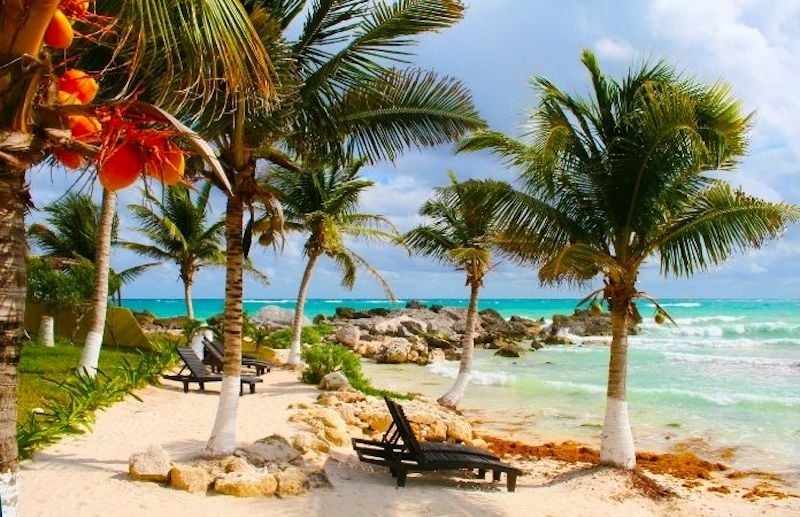
Image credit: AtanasBozhikovNasko via Canva Pro
Feeling like going beyond the usual and expected? Well then, the East African country of Mauritius just might be the right choice for you — especially since it introduced a Premium Visa. Aside from remote workers, this visa is also open to visitors, retirees, and parents with children studying in Mauritius. In a nutshell, it’s for those who wish to live in the country for up to a year, as long as they do not enter the Mauritian workforce during this period.
Income to prove: US$1,500 (~S$2,101.55) monthly
Visa application cost: US$30 (~S$42.03) for standard processing time
Average monthly cost of living: Rs26,570.20 (~S$778.90) per person, rent included
Average broadband internet speed: 26.53Mbps
Climate: Tropical maritime climate, with relatively little seasonal variation in temperatures
For the complete requirements and process, click here.
19. Seychelles
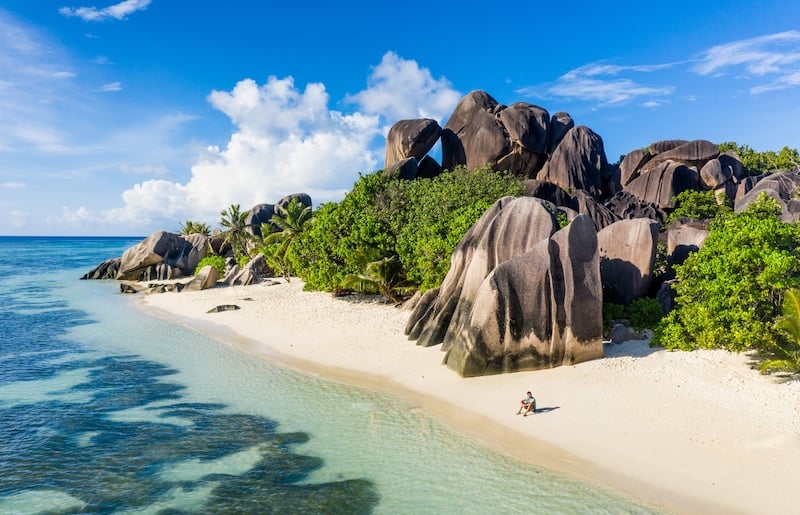
Image credit: Diamond Dogs via Canva Pro
Home to some of the world’s most photogenic beaches, Seychelles is definitely among the best countries for digital nomads. The Seychelles Workcation Program allows remote workers, freelancers, and entrepreneurs to stay there for a minimum of 30 days and a maximum of 12 months. And the best part? There’s no specific income requirement — although, given that it’s one of the most expensive places in Africa, you might want to allot your budget accordingly.
Income to prove: Not specified
Visa application cost: €45 (~S$63.81)
Average monthly cost of living: 27,500 SR (~S$2,746) per person, rent included
Average broadband internet speed: 34.46Mbps
Climate: Tropical climate with a rainy and dry season, and relatively little seasonal variation in temperatures
For the complete requirements and process, click here.
20. Cabo Verde
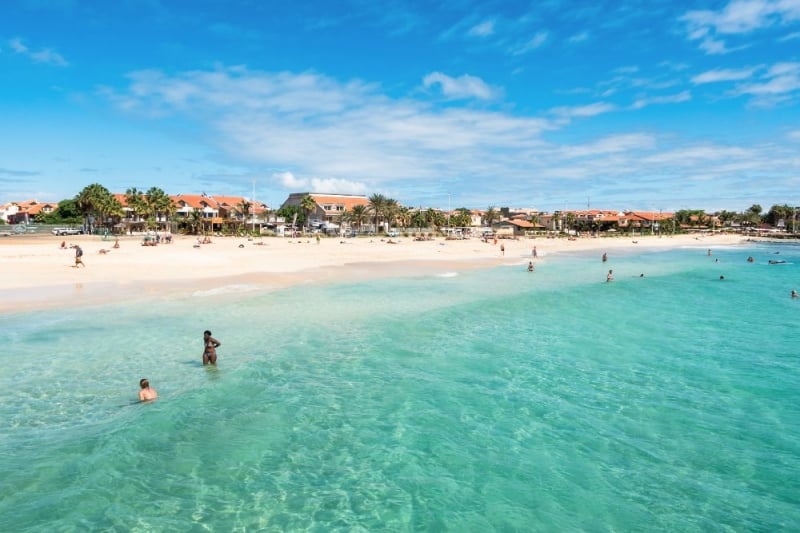
Image credit: Samuel Borges Photography via Canva Pro
Sun-drenched beaches, volcanic wonders, and a laid-back pace – Cabo Verde ticks all the boxes for being one of the most ideal countries for digital nomads. Its digital nomad visa is called the Remote Working Program, targeting freelancers and self-employed individuals who can work remotely using internet and digital tools.
This program allows workers to reside in the country for up to six months, with the possibility of renewal. Unfortunately, at the time of writing, only citizens from the following countries are eligible to apply:
- North America
- Europe
- Community of Portuguese Speaking Countries (CPLP)
- Economic Community of West African States (CEDEAO)
Income to prove:
- €1,500 (~US$1,605) monthly average bank balance in the past six months for individual applicants.
- €2,700 (~US$2,889) monthly average bank balance in the past six months for applicants bringing families.
Visa application cost: €25 (~US$26)
Average monthly cost of living: 92,343 CVE (~US$896) per person, rent included
Average broadband internet speed: 16.29Mbps
Climate: Tropical climate with a rainy,dry, and transition seasons, low rainfall, and lots of sunshine
For the complete requirements and process, click here.
The Americas
21. Mexico
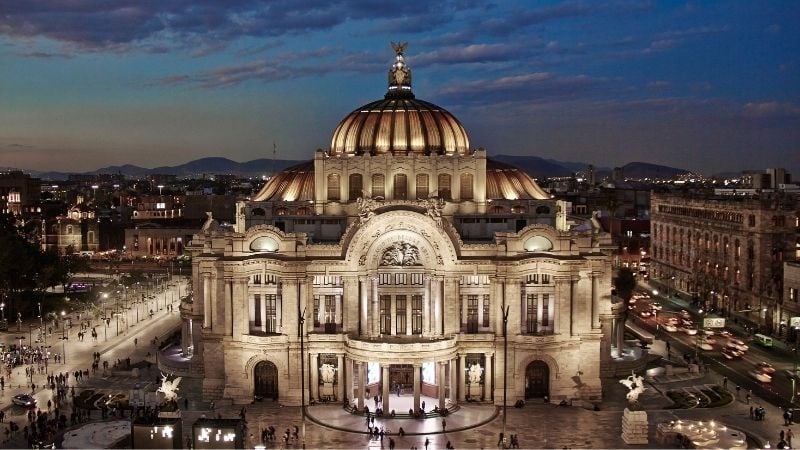
While Mexico‘s Tourist Visa allows you to stay in the country for up to six months, there’s also the Temporary Resident Visa for those who wish to stay longer. The latter is good for one year and can be renewed annually for another three years — so that’s a maximum of four years! Its main advantages over the Tourist Visa include being authorised to open a Mexican bank account, legally register a vehicle, and freely leave and reenter Mexico throughout your stay.
Like with others, the Temporary Visa allows you to work during your stay, as long as you are not hired by a company based there. And, of course, you’ll have to prove your financial capability.
Income to prove: US$1,945 (~S$2,616.80) monthly over the past six months; or at least US$32,400 (~S$43,590.96) overall account balance
Visa application cost: Mex$4,271 (~S$282.86) per year
Average monthly cost of living: Mex$25,373 (~S$2,041) per person, rent included
Average broadband internet speed: 49.91Mbps
Climate: Tropical climate with a rainy and dry season, and relatively little seasonal variation in temperatures
For the complete requirements and process, click here.
Also read: 46 Essential Spanish Phrases for Your Next Vacation
22. Barbados
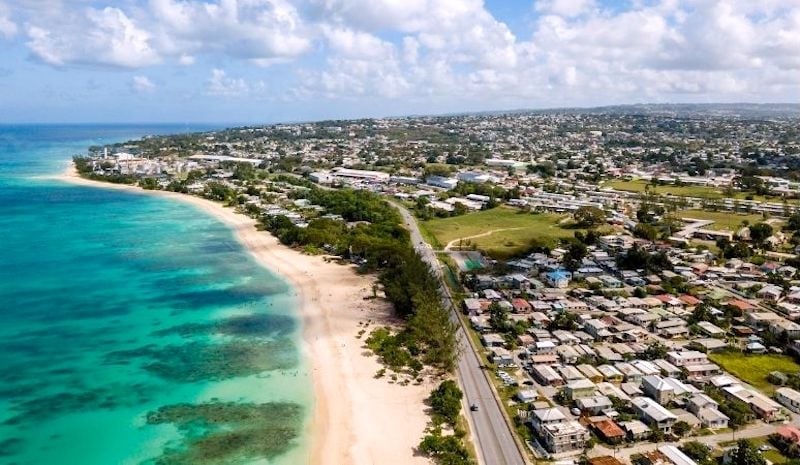
Image credit: SPVVK via Canva Pro
Yes, there’s more to Barbados than its beaches and, well, being the homeland of Rihanna. Thanks to the 12-Month Barbados Welcome Stamp, it’s also one of the ideal countries for digital nomads. As the name suggests, it lets you work remotely in this sunny island country for up to a year… and even bring your family along! You can also apply for renewal if you happen to enjoy your stay and wish to extend it.
Income to prove: US$50,000 (~S$67,282.25) annually
Visa application cost: US$2,000 (~S$2,691.29) for individuals; US$3,000 (~S$4,036.93) for married couples/families
Average monthly cost of living: Bds$2,366(~S$1,596) per person, rent not included
Average broadband internet speed: 78.27Mbps
Climate: Tropical monsoon climate, with a rainy and dry season, and relatively little seasonal variation in temperatures
For the complete requirements and process, click here.
23. Bermuda
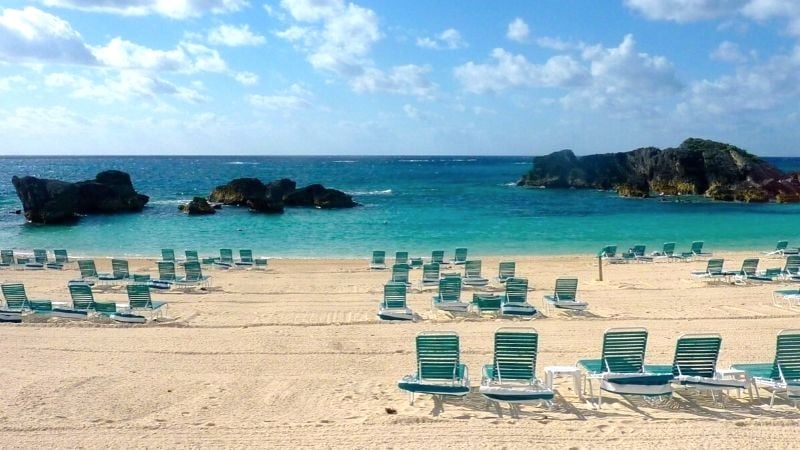
Bermuda is another Caribbean nation that joined the digital nomad visa squad. With their One Year Residential Certification, you can work and/or study remotely for a year. That said, it’s open to remote workers, self-employed entrepreneurs, and even university students with only online classes. Oh, and if you have children coming along, you can also enrol them in a local school. While you are not entitled to a renewal of this certification, you can still file another application after a year.
Income to prove: N/A; Enough to support
Visa application cost: US$263 (~S$353.92) per person
Average monthly cost of living: BD$3,025 (~S$4,118) per person, rent included
Average broadband internet speed: 73.60Mbps
Climate: Subtropical climate, with relatively fewer hurricanes and storms compared to other Caribbean nations
For the complete requirements and process, click here.
24. Dominica
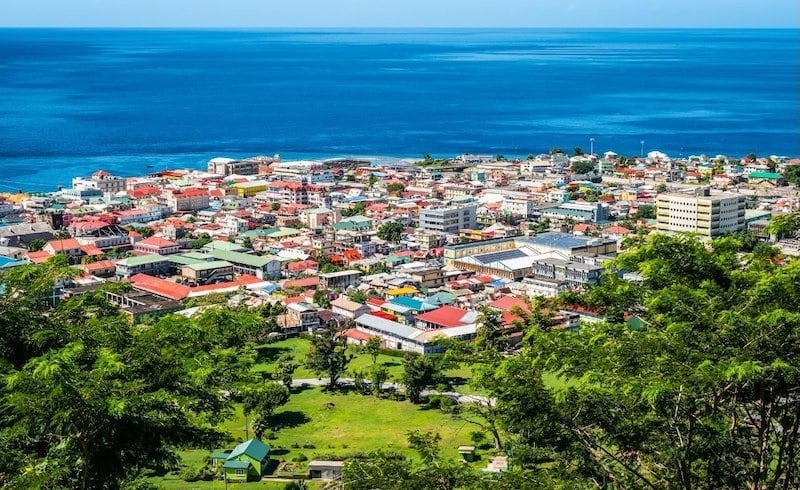
Image credit: NAPA74 via Canva Pro
Dominica is an English-speaking island in the eastern Caribbean, one of the ideal countries for digital nomads to work and stay in. It’s also quite the off-the-beaten-path destination since you’ll need to take a sea ferry or a connecting flight from nearby countries (like Puerto Rico, Guadeloupe, and Martinique) to get there. Nonetheless, their Work in Nature Extended Stay Visa is available for foreign remote workers aged 18 and above who wish to live there for up to 18 months! Those planning to bring their families along can opt for the country’s program that encourages children to attend a local school.
Income to prove: US$50,000 (~S$66,379.50) annually
Visa application cost: US$100 (~S$132.76)
Average monthly cost of living: EC$4,594 (~S$2,313) per person, rent included
Average broadband internet speed: 82.11Mbps
Climate: Mostly tropical rainforest climate, with some areas bordering on a tropical monsoon climate
For the complete requirements and process, click here.
25. Costa Rica
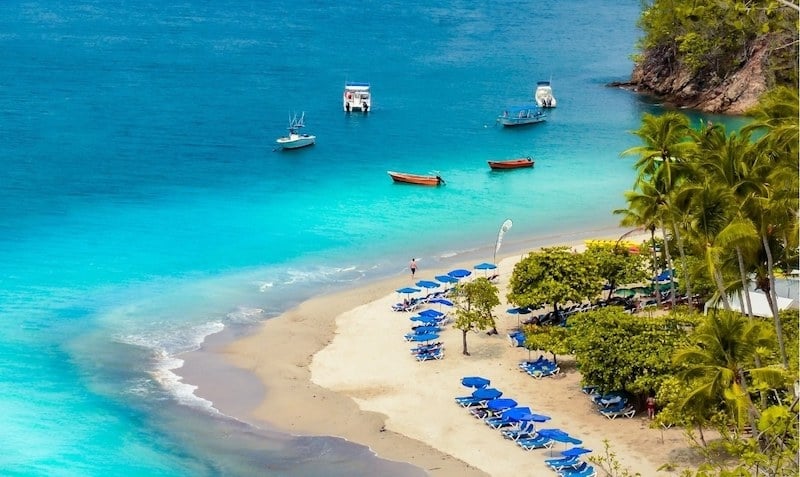
Image credit: JasonOndreicka via Canva Pro
And then we have Costa Rica — which is also visa-free for several Southeast Asian countries! Though, if you’d like to stay (and work) there for more than the allotted 90 days, you can apply for the Rentista Visa, which grants temporary residency for up to two years, with an option to extend.
Rentista Visa holders can either work on their own (as long as they’re not employees of a Costa Rica-based company) or establish a business. Aditionally, they’ll be eligible to apply for permanent residency after three or more years — without having to renounce their previous nationality!
Income to prove: US$2,500 (~S$3,364.72) monthly for the next two years; or US$60,000 (~S$80,753.40) deposit in a Costa Rican bank
Visa application cost: US$250 (~S$336.47) per person
Average monthly cost of living: ₡798,029 (~S$2,177) per person, rent included
Average broadband internet speed: 65.30Mbps
Climate: Mostly tropical climate, with select highland areas having temperate climate; relatively fewer hurricanes and storms compared to other Caribbean nations
For the complete requirements and process, click here.
26. Colombia
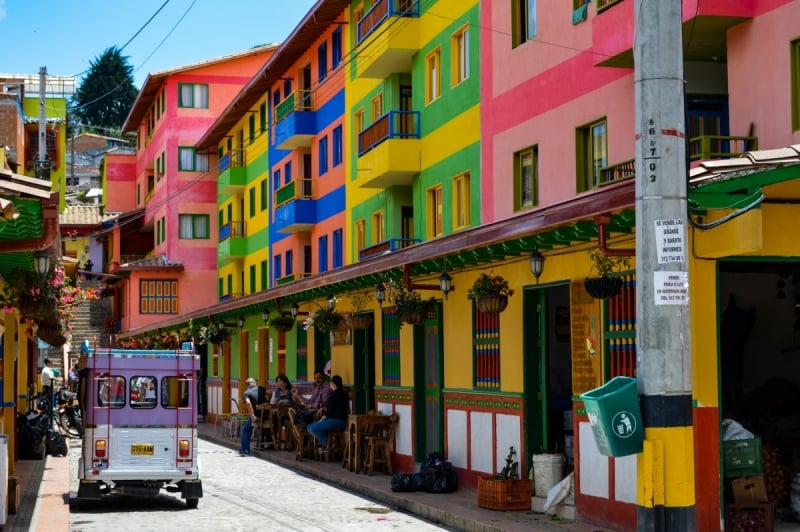
Image credit: Saul Mercado | Unsplash
Colombia has lively cities and deep cultural roots that make it one of the most enticing and best countries for digital nomads. The country’s Digital Nomad Visitor Visa, categorised as a Type V Visitors Visa, permits a stay of up to 180 days, or six months, within a single year. However, applicants must meet the following requirements to be eligible for the visa:
- Hold a passport from a country that doesn’t need an entry visa for Colombia.
- Work remotely for a company located outside of Colombia.
- Intend to stay in Colombia for more than 90 days.
That said, in Southeast Asia, citizens of Singapore and the Philippines can apply for the digital nomad visa.
Income to prove: 3,900,000 Col$ (~US$1,001) monthly
Visa application cost: US$178 (~S$242) per person
Average monthly cost of living: US$815 (~S$1,108) per person, rent included
Average broadband internet speed: 42.54Mbps
Climate: Tropical climate along the coast and eastern lowlands, and a cooler climate in the Andes and highlands. Very little seasonal variation in temperatures
For the complete requirements and process, click here.
27. Uruguay
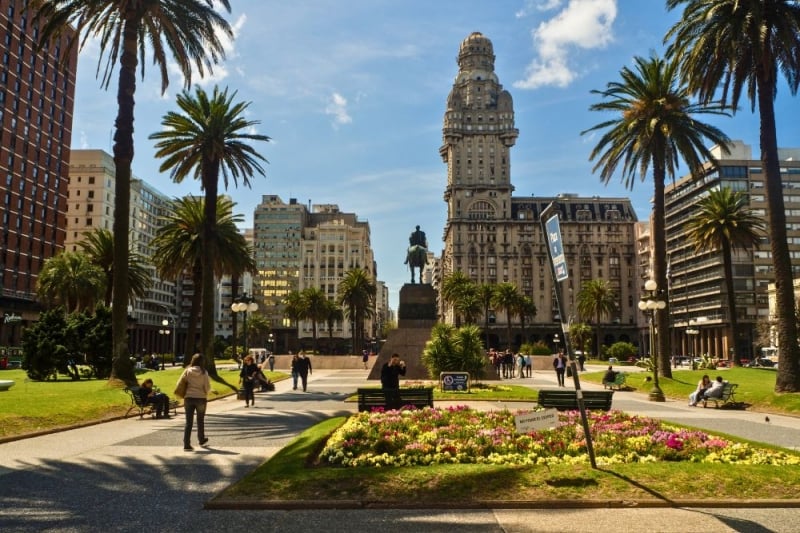
Image credit: Erlantz Pérez Rodríguez via CanvaPro
Digital nomads seeking a vibrant work-life balance, listen up! You can know work while embracing the lively Uruguayan lifestyle, one of the best countries for digital nomads. Uruguay offers a digital nomad visa, known as the Provisional Identity Card (Hojas de Identidad Provisoria), that allows remote workers to live and work in the country for six to twelve months, with the option to apply for permanent residency afterward.
The best part is, there’s no minimum income or skill set requirement. Additionally, it’s open to anyone who works remotely for a company or client outside of Uruguay, regardless of their nationality.
Income to prove: Not specified.
Visa application cost: US$15 (~S$20) per person if you apply online before arriving in Uruguay, US$30 (~S$40) per person if you apply at Uruguay’s National Civil Identification Office.
Average monthly cost of living: 56,900 UI (~S$2,009) per person, rent included
Average broadband internet speed: 139.13Mbps
Climate: Temperate climate with four distinct seasons, featuring a clearly defined winter and summer, as well as transitional autumn and spring seasons.
For the complete requirements and process, click here.
28. Antigua and Barbuda
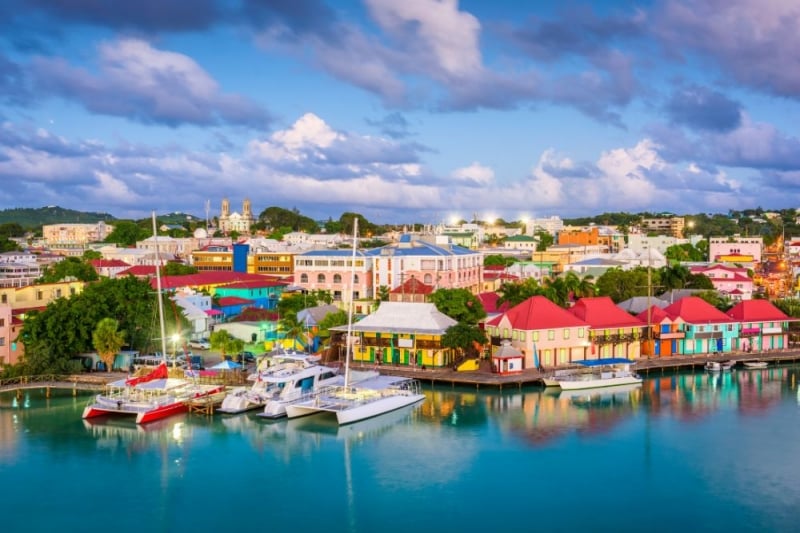
Image credit: Sean Pavone via CanvaPro
Antigua and Barbuda, a captivating twin-island nation known for its pristine beaches and vibrant coral reefs, welcomes digital nomads with their Nomad Digital Residence Visa Programme. It allows remote workers to live and work in the island paradise for an extended period.
The good news is that applicants from any country are welcome! As long as you’re self-employed or employed by a company outside the country, and have a clean criminal record, you can apply for this program.
Income to prove: US$50,000 (or equivalent) of minimum annual income, and proof of financial self-sufficiency (for applicant and dependents if any)
Visa application cost: US$1,500 (~S$2,040) for a single applicant, US$2,000 (~S$2,720) for a couple, and US$3,000 (~S$4,080) for a family of three or more.
Average monthly cost of living: S$1,900 (~S$2,584) per person, rent included
Average broadband internet speed: 33.33Mbps
Climate: Tropical maritime climate, with one rainy season from May to November
For the complete requirements and process, click here.
Also read: 10 Items That Will Make Your Digital Nomad Life A Whole Lot Easier
Fortunately, most of these countries for digital nomads have done away with COVID-19 travel restrictions. If you’ve been dreaming of having a long workcation aboard, this is your sign to apply for a digital nomad visa! Feeling a bit anxious about how to fit in once you’re there? Well then, you might want to read up on how to effortlessly make friends during your working holiday!
So, did any of the destinations from our list of top countries for digital nomads catch your eye? Or, better yet, have you already tried living as a digital nomad in one of these countries before? Go ahead and tell us all about it on our Facebook page.
Feature image credit: sorincolac via Canva Pro




